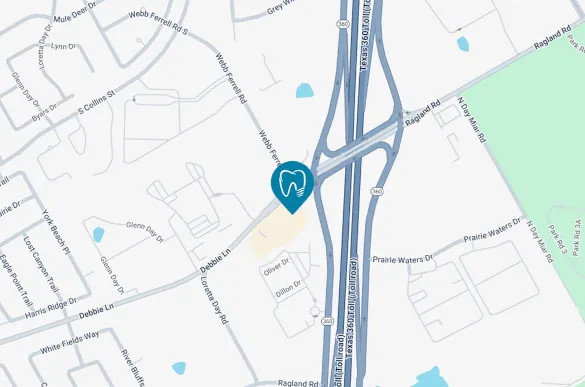Signs of gum disease to watch for include red or swollen gums, bleeding while brushing and flossing, receding gums, persistent bad breath, loose teeth, and pain when chewing. If you have any of these symptoms, please schedule an appointment with our team.
Gum Disease & Periodontal Disease Treatment in Arlington, TX
-
Cost
Prices can vary depending on the type of gum disease treatment required and the stage of the disease. We will discuss overall costs based on your treatment plan. To help with budgeting, we offer external payment options and have an in-house savings program.
Financing Options -
Procedure Duration
Deep cleanings for treating gum disease often take one or two hours, depending on the extent of the disease and the area being treated. Several visits may be needed in more complex cases.
Schedule Today -
Comfort Measures
With our modern techniques and technology, we will make your gum disease treatment as pleasant and easy as possible. If needed, we offer sedation dentistry options, including laughing gas, oral sedation, and IV sedation.
Sedation Dentistry
Gum Disease Treatment in Arlington, TX
Gum disease (or periodontal disease) happens when plaque buildup leads to gum infection. If untreated, it can cause inflammation, bleeding, and eventually tooth loss. The disease can also progress from gingivitis to periodontitis, affecting the bone that supports teeth.
Treating gum disease is crucial to preventing irreversible damage, maintaining oral health, and reducing risks linked to systemic conditions like heart disease, diabetes, and stroke. Early treatment ensures healthier gums and long-term dental stability.
South Arlington Smiles offers comprehensive gum disease treatments near Arlington, TX, so that your oral health stays in tip-top shape.
01.
What Gum Disease Treatment Involves
Gum disease treatment begins with a dental evaluation to assess the severity. Early-stage gingivitis is treated with professional cleanings and improved at-home care.
Deep cleaning procedures like scaling and root planing for advanced periodontitis remove plaque and bacteria below the gumline. In more severe cases, surgery may be recommended.
02.
After Your Gum Disease Treatment
Proper aftercare is essential for healing and preventing recurrence after gum disease treatment. Brush and floss gently but thoroughly, especially around treated areas. Use any prescribed antimicrobial rinses as directed, and avoid smoking, which hinders healing.
You should also eat soft foods initially and stay hydrated. In your follow-up appointments, we will continue to monitor your gum health and check for any additional signs of gum disease.
FAQ
-
What signs of gum disease should I look for?
-
What are the different stages of gum disease?
Gingivitis is the first stage of gum disease, marked by red, swollen gums and bleeding. If not treated early on, it can advance to periodontitis, which causes receding gums and bone loss. Advanced periodontitis then causes severe tissue damage, tooth loosening, and potential tooth loss without professional treatment.
-
Is gum disease reversible?
Gum disease is reversible early on with good oral hygiene and professional cleanings. However, once it progresses to periodontitis, it can’t be reversed. It can be managed, though, with ongoing dental care, deep cleanings, and maintenance to prevent further damage and tooth loss.

